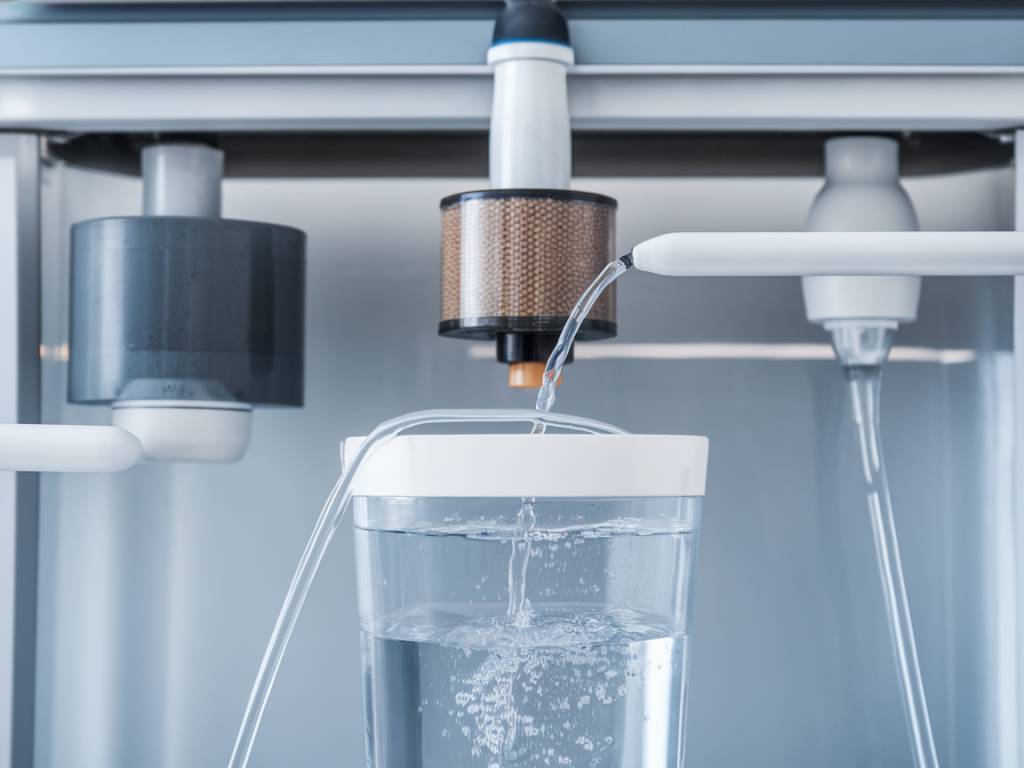In the melodious symphony of nature, water remains the lifeblood, carving landscapes and sustaining life from the deepest oceans to the trickling streams. As guardians of this precious resource, we find ourselves at the confluence of necessity and innovation. Water filtration, once a simple ritual enacted by running liquid through a sieve of ancestral ingenuity, has now embraced the marvels of modern technology.
The Dawn of Cutting-Edge Filtration
Imagine a world where water trickling from our faucets is as pure as the crystal-clear lakes dotting alpine paradises. Thanks to recent advancements, this vision is becoming a reality. Let’s dive into the latest innovations transforming water filtration systems, bringing pristine waters directly to our taps.
Graphene-Enhanced Filters: A New Frontier
Graphene, a single layer of carbon atoms arranged in a two-dimensional honeycomb lattice, is not just a material but a revolution. Universally recognized for its strength and conductivity, it has found a pivotal role in water filtration.
Picture a net so fine that even the tiniest impurities are caught. Graphene oxide membranes are designed to be both highly permeable and selective, allowing water molecules to pass while trapping unwanted contaminants such as heavy metals and pathogens. Such filters promise a future where we transform seawater into drinkable reserves, a crucial leap for coastal and arid regions thirsting for innovation.
The Rise of Bio-Inspired Filtration
Nature, the grand architect, offers blueprints for some of the most efficient filtration systems. From the humble mussel, clinging to rocks by the sea, scientists have mimicked protein-based adhesives to craft filters that are not only durable but environmentally friendly as well.
These bio-inspired filters aim to replicate the water-purifying prowess of aquatic ecosystems. The implementation of these biological designs in filtration systems ensures that the process remains sustainable and eco-conscious, much like the natural cycles we seek to preserve.
Nanotechnology: A Microscopic Marvel
If we peer deeper, down to the molecular level, we uncover the potential of nanotechnology. By manipulating materials at a nanoscale, researchers have developed filters capable of capturing impurities that evade traditional methods.
- Nanotubes: With channels narrower than a human hair, nanotubes effectively filter bacteria and viruses, offering a potent solution for sanitation in developing regions.
- Iron Nanoparticles: These tiny titans bind with arsenic, flushing this dangerous element out of water supplies. It’s a beacon of hope for communities grappling with arsenic-contaminated drinking water.
Photocatalytic Purification: Harnessing Light
As sunrise sweeps across the horizon, imagine harnessing those first rays to cleanse water. Photocatalytic purification employs light-sensitive materials to break down pollutants. Titanium dioxide, for example, acts as a catalyst when exposed to UV light, initiating reactions that decompose organic materials and pathogens.
These systems, simple yet effective, promise us off-grid solutions powered purely by sunlight – an elegant testament to the synergy between our technological strides and the gifts of the sun.
The Internet of Things: Intelligent Water Systems
In an age where connectivity reigns supreme, the Internet of Things (IoT) is integrating into water filtration, creating systems that are not only smarter but also more responsive.
Imagine a network of sensors within domestic and municipal water systems, transmitting real-time data to manage filtration processes. With IoT, these systems can anticipate demand fluctuations, monitor contamination levels, and optimize operations autonomously. The results? Reduced water waste and energy consumption, ensuring efficiency in our pursuit of sustainability.
The Human Element: Education and Engagement
Amidst these technological feats, let us not forget the pivotal role of education. Engaging communities in the art and science of water purification is vital. By fostering awareness and understanding, every individual becomes a custodian of our aquatic environments, equipped to appreciate and preserve the delicate balance of water use and conservation.
As we explore these exciting horizons, let us be reminded of the delicate dance we perform with nature. It is here, at this intersection of innovation and ecology, that we find our true purpose. By embracing these technologies, we don’t merely filter water; we cleanse our connection to the earth, ensuring that rivers, lakes, and seas continue to tell their stories for generations to come.

